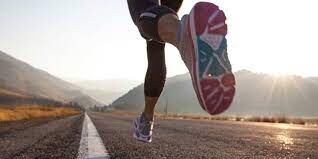Running News Daily
Running News Daily is edited by Bob Anderson. Send your news items to bob@mybestruns.com Advertising opportunities available. Train the Kenyan Way at KATA Kenya and Portugal owned and operated by Bob Anderson. Be sure to catch our movie A Long Run the movie KATA Running Camps and KATA Potato Farms - 31 now open in Kenya! https://kata.ke/
Index to Daily Posts · Sign Up For Updates · Run The World Feed
Seven Long Run Workouts to Nail Your Goal Pace
How many long runs should a triathlete do each week? What intensity should they be? Should a long run follow a bike session to appropriately simulate race conditions? These are just a few questions triathletes and coaches in our sport ponder.
When training for an IRONMAN 70.3 or IRONMAN race, completing the individual discipline distances during training provides a major psychological boost, before tackling the distance in the event. It can be a huge confidence boost to have covered as much of the distance as possible before the race. While it’s quite likely that you will complete a 2.4-mile swim and 112-mile bike ride before your IRONMAN race, it’s much trickier to incorporate a full marathon into your training. We need to be much more aware of the effects of a long run due to the higher impact of running relative to swimming and biking. Long runs also require more recovery than a long swim set or long bike session.
How far and how often one should run will depend on the athlete and where they are in their training. How much volume can that individual handle? How much time is available to train and recover? What are the external factors affecting their lives, be it family or work commitments, as well as how well they sleep and manage stress. These are all things that must be considered when planning out training and volume. A coach can help you balance all those elements and prescribe the appropriate plan for you. (Find your perfect coach with the newly-launched IRONMAN CoachMatch.)

We consulted with IRONMAN Hawaii age-group champion, two-time Olympian and coach Chris Hauth for his ideas on long run training. He also shared some sample run workouts to help you prepare for an IRONMAN 70.3 or IRONMAN distance race.
The Aerobic Long Run

Hauth likes to remind triathletes that, unlike runners, they are balancing and combining three sports into a single event, and thus run training should never be viewed in isolation: "While getting ready for a standalone marathon race requires maximizing aerobic capabilities via running, triathletes have the advantage of two other sports to assist with developing their aerobic system," he said.
Hauth typically recommends an aerobic or "conversational" long run once a week—depending on the athlete, their race plans, and experience. "The goal is to build time on the feet," he states. "Since the triathlete is also gaining aerobic conditioning in the pool and on the bike, the goal of an aerobic long run is as much physiological—to increase the density of mitochondria and increase in capillary beds to improve muscle and tendon strength." This means heading out the door at a low intensity pace. From time to time, he recommends that his athletes mix in a little intensity, as long as they are careful to keep it "all good form and low stress."
Adding short intervals to an aerobic long run:
→ Workout 1: Try 60-90 minutes easy running, with the last 30 minutes alternating between 5 minutes tempo (15-30 seconds faster than race pace), 5 minutes easy. Nothing too fast here, just a little variation.
→ Workout 2: Consider adding some shorter bursts of speed throughout a 90-minute to 2-hour run. For example, you could do some 10, 20, 30, 40, 50, 60, 50, 40, 30, 20, 10 second faster bursts with 1-2 minutes easy between each burst during your run, and repeat this sequence twice through. Again these aren’t 'best efforts,' but just strong, faster efforts with great form.
→ Workout 3: Fartlek-style long run where you run ~30 sec/mile faster than race pace for 2-3 miles and then 30 sec/mile slower than race pace for 2-3 miles, repeated 2-3x through.
Higher Intensity Long Run Workout
Interval training is a great way to add intensity into your training and Hauth prescribes some longer, higher intensity runs for his more experienced athletes. During a run, intervals are typically short at paces faster than your planned race pace, with recovery at race pace or easier. They have a variety of benefits, as they build neuromuscular development and efficiency as well as improving your VO2 max. Hauth points out that a time-crunched athlete can use interval sessions to build fitness as well as endurance, though he still sees value in the aerobic long runs throughout the season and interval work cannot completely replace the long run.
One of Hauth’s favorite run workouts for practicing and testing race pace is to mix speed work with race-pace effort. "The body is switching back and forth between the fat-burning, aerobic system and the glycogen-depleting anaerobic system," he says. "The goal over several weeks is for the athlete to run at the lower intensity race-pace effort following an initial harder effort."
→ Workout 1: After a 20-minute easy warm-up, run 10-20 x 400m (preferably on the track or other flat surface), at a pace slightly higher than your goal race pace. Take 30 seconds recovery between each repeat. After completing the interval work, run 3 to 8 miles at race pace. An athlete might start with 10 x 400 and a 3-mile run after the track intervals and build to 20 x 400 and an 8-mile run after the track intervals during an IRONMAN training build over a couple of months.
Running Off The Bike
In triathlon, we run off the bike, so it makes sense that we should replicate this in training as well. This gets our body and legs used to running tired, and we get familiar with the sensation after a challenging bike ride. Hauth notes that some triathletes simply run well off the bike, despite little practice or experience: "I think it often has a lot to do with their pacing ability and effort on the bike, as well as a good bike fit!" For amateur athletes, the number of times you run after a bike workout will be determined by your personal schedule, but it’s good practice to try and do one or two runs off the bike each week, varying the intensity of the run off the bike.
→ Workout 1: After a harder intensity bike set (perhaps on the trainer), include some shorter interval speed work, for example, 12 x 2 minutes progressive where each 30 seconds of the 2 minutes gets progressively faster.
If your race pace is 8min/mile then try 30sec at 9mins, 30sec at 8.30min, 30sec at 8mins, 30sec at 7.30min pace (or scale accordingly) where the last 30sec is faster than your race pace. Take 2mins easy recovery between.
→ Workout 2: After a longer ride it’s good to add a 30-40 minute steady run off the bike. Hit your race pace (or a little faster) for the first 10 minutes, then relax into an easier, steady state pace for the remaining time. This has the benefit of getting your legs used to hitting the race pace straight off the bike, and settling into good form and rhythm. Be careful not to go too fast for the first 10 minutes, but just try to find that race-pace rhythm.
→ Workout 3: One of Hauth’s favorite workouts is "cruise intervals off the bike" where he completes a long ride (80-90 miles), and then runs mile repeats. He explains further: "after an 80-90 mile ride, I run 6 x 1-mile repeats starting each interval on my goal pace split. That means if I plan to run a 7:30 pace in the race, if I run a mile in 7:00, I have 30 seconds' rest before the next mile repeat."
There are just a few options to change up your running. There are many ways to incorporate your longer run into your training plan and add a little variation into the mix. As well as keeping your mind focused and alert, it will train the body to adapt to the right pace. As mentioned for all of these sessions, remember good posture and good form is always key, regardless of speed, pace, distance, or time.
by Laura Siddall
Login to leave a comment




